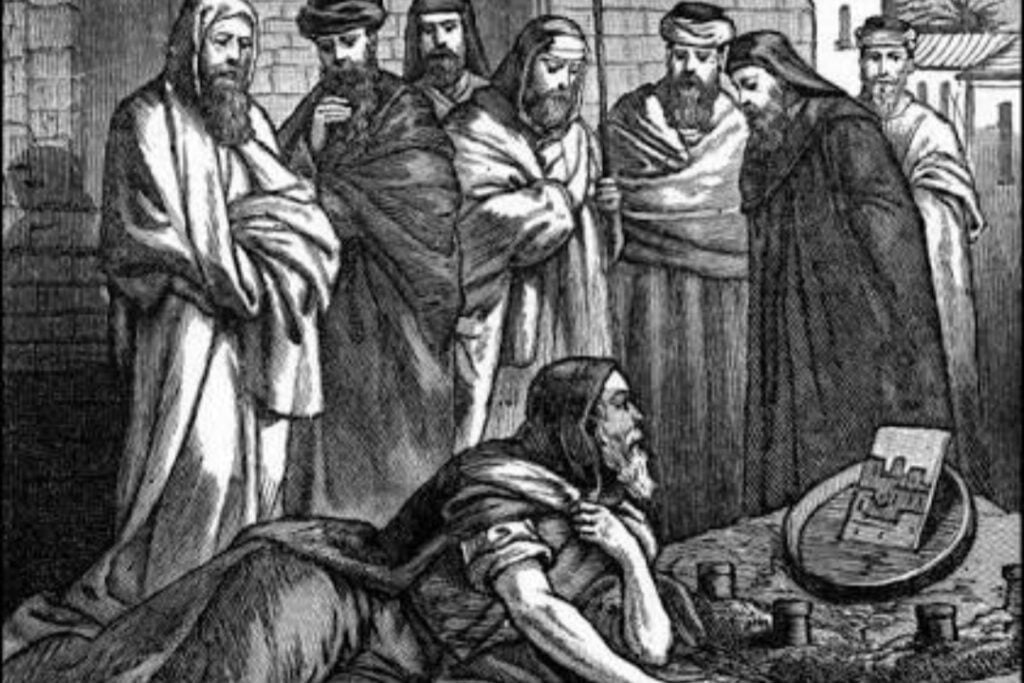
Ezekiel 33

Form of Ezekiel 33:1 – 9
The boundaries of the literary unit are set as Ezekiel 33:1–20 by the message reception formula of v 1; and by the beginning of a new, dated piece in v 21.
The use of the prophetic address in Verse 2, 7, 10, and 12 reveals four sections; Verse 2–6, 7–9, 10–11, and 12–20. It is customary to split these sections into two larger units; Verse 2–9 and 10–20, mainly because of the external links these verses have with chapters 3 and 18 respectively.
Structure of Ezekiel 33:1 – 9
The parable of the watchman of this passage uses a framework of legal language. There are two “cases” present (“if, when” vv 2, 6); in accord with priestly casuistic formulation of offenses.
The style of the Holiness Code is very similar; especially the combination of case and verdict in Lev 24:17, “If someone kills a human being, he will surely be put to death.”
Verse 9 in the course of the application is closer to this formulation: the parabolic illustration demanded its own terminology. The casuistic framework develops with a loose narrative sequence of clauses, like Deuteronomy’s homiletic development of the case-law style (cf. e.g., Deut 13:1–5).
The polarized opposition of life or death also derives from Deuteronomy; from a deuteronomistic portion (Deut 30:15–20). The legal framework use to describe a non-legal set of circumstances; which comprised no legal offense and for; which no legal penalty prescribed.
You may read > Ezekiel Chapter 14
The priestly style uses to convey an essentially prophetic concern. The application (Verse 7–9) addressed to the prophet, for it takes the form of a commissioning oracle (Verse 7), investing Ezekiel with the role of a watchman, and of exposition of that role (Verse 8–9). There are two cases of the parable inverte in a chiastic order (v 4 = v 9, v 6 = v 8).
Setting of Ezekiel 33:1 – 9
The primary setting of Verses 1–9 is difficult to determine because of the fact that Verses 7–9 is a virtual repetition of 3:17–19. The factor of literary structuring has undoubtedly played a role in this double placement: Chapter 33 introduces a new section of the book, in which a positive message of judgment replaces the earlier proclamation of judgment.
However, where the watchman passages originally belonged to dispute; and there are both literary and historical factors are involve in the question.
Schmidt has claimed that there are different situations lie behind vv 1–6 and 7–9 respectively; First, the people and then the prophets addressed; and that, while the parable belongs to the second, post-587 BCE phase of the prophet’s ministry, the “application” has been borrowed from the chronologically earlier 3:16–21.
By contrast, Kraetzschmar argued that 33:1–9 all belong to the second phase and that the emphasis on the individual rather than on national solidarity is evidence of that setting.
A number of scholars, including Eichrodt and Zimmerli have made similar claims.
As to the unity of vv 1–9, Zimmerli has pointed to the close correspondence between vv 1–6 and 7–9 and the unlikelihood that vv 2–6 ever existed independently, although it is possible that they were subsequently inserted to amplify vv 7–9.
Textual notes
Verse 4
a The LXX reads h{ romfaia “the sword” with definite article and BHS also suggests this, thus br\j#h^.
Verse 5
a BHS suggests to read ryh!z=h!; which is Hiphil perfect instead of BHS rh*z=n] which is Niphal perfect.
Verse 6
a BHS believes that definite article has to be added here, thus br\j#h^ for it thinks the case here is just similar to that of verse 4.
Verse 7
a The content and emphasis of verses 7-9 and 3:17-19 are closely related and similar.
Verse 8
a The second uv*r` “the wicked one” is lacking in some manuscripts like the LXX* and Syriac, so also the parallel reading of this verse found in 3:18. BHS also suggests to delete it.